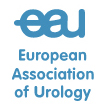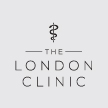- 07710 105 356
- darrellallen.privatepractice@nhs.net
ABOUT MR DARRELL ALLEN

Career
I completed my basic surgical training in South London and was then appointed as a research fellow at Guys and St. Thomas' Hospital in 2002. I spent two years developing my clinical skills in urology as well as undertaking a laboratory based research project aimed at identifying new blood markers for prostate cancer.
I was then appointed as a urology specilaist trainee on the North West Thames rotaion for five years. I completed my training in 2011 having undertaken a two year fellowship in Endourology at University College Hospital. It was at this point that I took up my consultant position at the Royal Free Hospital.
My urological practice covers the breadth of urology except paediatrics. I have a special interest in endourology and the treatment of kidney stones.
Operative Experience
I am one of the few surgeons in London to offer supine PCNL, an operation which I perform on an almost weekly basis.This allows large stones to be removed from the kidney via a very small incison with the patient lying anaesthetised on their back. In most units the patient is turned on their front (prone) which can put more pressure on the heart and lungs during the anaesthetic.
I perform approximately four ureteroscopies a week. This is an opeartion to remove smaller stones from the kidney or ureter using a telescope that is inserted via the bladder. There are no cuts and the stone is usually broken with a laser and removed with a basket.
I offer vasectomy, scrotal operations to remove cysts and fluid, cystoscopies to examine the bladder and endoscopic operations on the prostate to improve urinary symptoms.
Teaching and Training
I teach on several operative skills courses each year that aim to train consultants how to perform Supine PNCL. We have delegates from both the UK and much further afield. There is usually a lecture on the subject followed by live surgery cases.
I am involved in teaching trainee urologists and theatre nurses how to treat kidney stones. This utilises the equipment from the operating theatre though to undertaken on very realistic models rather than patients.
I participate in the annual selection process to appoint urology trainees and examine medical students in Finals. I teach undergraduates in urology as well as supervise junior doctors to make sure that they are developing as they are expected to.
Publications
1. Allen D, Longhorn SE, Philp T, Smith RD, Choong S. Percutaneous urinary drainage and ureteric stenting in malignant disease. Clinical Oncology 2010; 22: 1550-1554.
2. Ockrim JL, Allen D, Shah PJ, Greenwell TJ. A tertiary experience of urethral diverticulectomy: diagnosis, imaging and surgical outcomes. BJUI 2009; 103: 1550-1554.
3. Allen D, Hindley RG, Ewe SH, Kucheria R, Popert R. The impact of intravenous Furosemide on flow rate characteristics and clinic waiting times. Int J Urol 2008; 15:344-345.
4. Allen D, Mishra V, Pepper W, Shah S, Motiwala HG. A single centre experience of symptomatic male urethral diverticula. Urology 2007; 70: 650-653.
5. Mishra VC, Allen D, Hudd C, Karim OMA, Motiwala HG, Laniado ME. Does intraprostatic inflammation have a role in the pathogenesis and progression of BPH? BJUI 2007; 100: 327-331.
6. Allen D, Tiptaft R, Glass J. Defining the learning curve for PCNL. J Endourol 2005; 19: 279-282.
7. Allen D, Challacombe B, Clovis S, Dasgupta P, Popert R. Urine cytology: Appropriate use maximises sensitivity and reduces cost. Cytopathol 2005; 16: 139-142.
8. Bapat V, Allen D, Young C, Roxburgh J, Ibrahim M. Survival and quality of life after cardiac surgery complicated by prolonged intensive care stay. J Card Surg 2005; 20: 212-217.
9. Allen D, Hindley R, Cahill D, Rottenberg G, Popert R. Does body coil MRI have a role in the pre-operative staging of patients with clinically localised prostate cancer undergoing radical retropubic prostatectomy. BJUI 2004; 94: 534-538.
10. Allen D, Butt A, Cahill D, Wheeler M, Popert R, Swaminathan R. Plasma free DNA offers a sensitive and specific test for prostate cancer. Annals N Y Acad Sci 2004; 1022:76-80.
11. Allen D, Popert R, O’Brien T. The Two Week Wait Initiative- Useful modernisation or gimmick? J R Soc Med 2004; 97: 279-281.
12. Wiener E, Allen D, Porter RJ, Wickramasinghe SN et al. Role of FcgRI (CD64) in erythrocyte elimination and its up-regulation in thalassaemia. Br J Haematol. 1999; 106:923-930.
Poster Presentations
1. Singh PB, Mandegaran R, Ellis G, Papadopoulous A, Davies N, Goode A, Woodward N, Yu D, Allen D, Ajayi L. Does body mass index predict outcome in supine percutaneous nephrolithotomy? BAUS Manchester 2013.
2. Singh PB, Mandegaran R, Papadopoulous A, Davies N, Goode A, Woodward N, Yu D, Allen D, Ajayi L. Supine Percutaneous nephrolithotomy: upper pole access is possible without increased risk of complications. “Experts in stone disease” conference- Dubai 2012.
3. Singh PB, Mandegaran R, Papadopoulous A, Davies N, Goode A, Woodward N, Yu D, Allen D, Ajayi L. Does body mass index predict outcome in supine percutaneous nephrolithotomy? “Experts in stone disease” conference- Dubai 2012.
4. Girfoglio D, Allen D, Kirkham A, Johri N, Wheeler D, Choong S, Moochala S, Unwin R. CT scan evaluation of papillary density in hypercalciuric and non-hypercalciuric stone formers. European renal association and European dialysis and transplant association- Paris 2012.
5. Girfoglio D, Allen D, , Moochala S, Wheeler D, Unwin R. Aortic calcification in hypercalcuric and non-hypercalciuric stone formers. European Renal Association and European Dialysis and Transplant Association- Paris 2012.
6. Singh PB, Arumuham V, Davies N, Goode A, Woodward N, Papadopoulous A, Yu D, Allen D, Ajayi A. Supine percutaneous nephrolithotomy: our experience with 103 consecutive cases. BAUS section of Endourology- Birmingham 2012.
7. Ray ER, Allen D, Bycroft J, Allen C, Smith RD, Choong S, Kellett M, Philp T. Outcomes of the rendezvous procedure for the management of complex ureteric strictures. BAUS- Glasgow 2012.
8. Allen D, Bycroft J, Philp T, Choong S, Smith RD. Is routine post-operative renal tract stone culture necessary? SIU- Berlin 2011
9. Allen D, Jones H, Bycroft J, Rumsby G,, Philp T, Choong S, Smith RD. Has urinary calculus composition altered over the past 16 years? An analysis of over 50,000 stones. BAUS- Liverpool 2011.
10. Gilleard O, Allen D, Hanna M, Shamsuddin A, Ramsay J. Re-admission and intervention rates post-ESWL. WCE- Munich 2009.
11. Allen D, Wong K, Ockrim J, Shah PJR, Greenwell TJ. The presentation, diagnosis and outcome of urethral diverticulum repair in the female. BAUS- Manchester 2006.
12. Mishra VC, Allen D, Nicolaou C, Hudd C, Karim OMA, Motiwala HG. Does intraprostatic inflammation have a role in the pathogenesis and progression of BPH? BAUS- Manchester 2006 and AUA-Anaheim 2007.
13. Allen D, Tiptaft R, Glass J. The learning curve for percutaneous surgery- the first 60 cases performed by a single surgeon. AUA- San Fransisco 2004.
14. Allen D, Butt A, Cahill D, Wheeler M, Popert R, Swaminathan R. Plasma-free DNA offers a sensitive and specific test for prostate cancer. AUA- San Fransisco 2004.
15. Cutting C, Allen D, Choi W, Mushtaq I. The posterior retroperitoneal laparoscopic approach to the kidney: Is it suitable for all children? World Congress of Endourology- Montreal 2003.
16. Wiener E, Allen D, Porter RJ, Wickramasinghe SN et al. Up-regulation of FcgRI and its role in red cell destruction in thalassaemia. Br J Haematol. 1998 Volume 101 Supplement 1 and Int J Haematol. 1996 Volume 64 Supplement 1 p.s8.
Invited Lectures
1. Current surgical management of renal tract stones -Renal Association Congress - London - May 2015
2. "Heartsink Stones” – Royal Society Of Medicine Presidents Day – London 2011
Memberships
1. British Associaton of Urological Surgeons
2. European Urological Association





